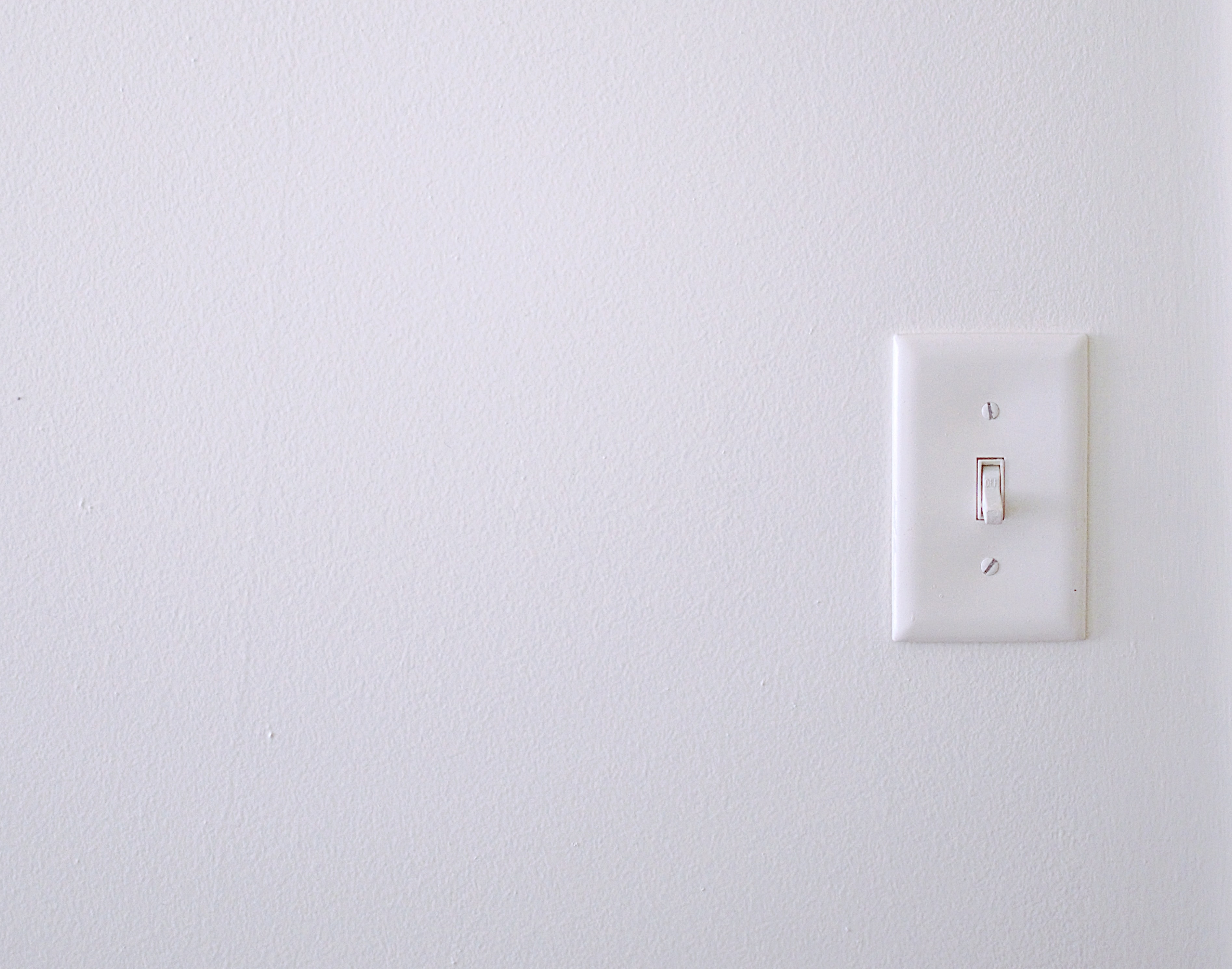It is often said that the average homeowner doesn’t know how electricity works – we just flick the switch and the light turns on, and that is all we need to understand. In fact, the wall switch is the most common and utilitarian electrical device we have in our home. And while switches look the same once the face plate is installed, there are 4 basic types of electrical switches typically installed in a residence, and they function differently on the inside.
Switches are typically utilized to control lighting in your home, although you may have a switch which controls another electrical device. Switches can be purchased in a variety of styles – toggle, rocker, slider, or push-button – but the style you choose doesn’t affect the switch’s actual function and wiring.
- Single-pole Switch: This switch is known as the “workhorse” of switches, and is your basic general-purpose switch. It is utilized to control a light, receptacle, or other device from a single location. Single-pole toggle switches often exhibit “on and off” markings which are not found on other switches. A single-pole switch has two brass-colored screw terminals that are connected to the hot wires. The first brass terminal is designated for the incoming hot wire from the power source; the second is for the wire going out to the supported fixture. Most single-pole switches also feature a ground terminal for connecting the circuit’s ground wire.
- Three-Way Switch: Three-way switches are always utilized in pairs. They allow the control of a light or receptacle from two different locations in the room, such as at two different entranceways. These switches necessarily do not include on/off markings, as the positions will change as the switches are used. The three-way switch features three terminal screws. The terminals are known as common, travelers and interchangeable. The hot wire which originates from the power source connects to the common screw terminal (typically marked “COM”). For safety reasons, it is essential to remember that travelers are always hot wires. The switch also features a ground screw. When replacing a three-way switch, mark the wire attached to the COM terminal before removing the old switch. The other two terminals are interchangeable, so they do not need to be specially marked, as they can go either way. A white wire connected to a traveler terminal is hot, and should be marked with black tape to indicate that fact. Three-way switches are commonly found at the top and bottom of a staircase, in garages that have two entryways, on either end of hallways, and any other locations where two separate switches control one light or fixture.
- Double-Pole Switch: The double-pole switch is most often utilized in industrial situations, but can sometimes be found in residential electrical systems. Similar to the single-pole switch discussed above, a double-pole switch has on/off markings and controls equipment or fixtures from a single location. However, a double-pole switch has four hot brass terminals, plus a ground terminal. This configuration allows for connection to two pairs of hot wires from a 240-volt circuit. Double-pole switches are usually rated for 30 amps; standard switches are 15 or 20 amps. These switches can be used to control the power needed for higher-demand appliances, motors, and heavy machinery.
Luckily, Sarasota homeowners never have to learn too much about the details of electrical switches. They can call Promise Electric to help install their switches and electrical systems, to upgrade electrical panels and to provide basic wiring maintenance. If you have an electrical project, don’t risk injury – call the master electricians at Promise Electric.



